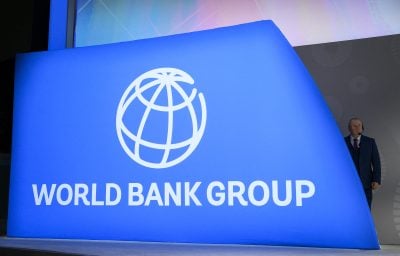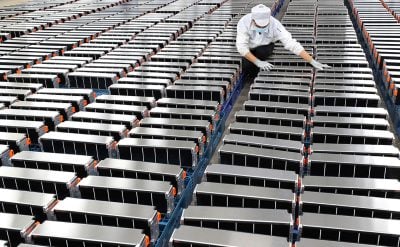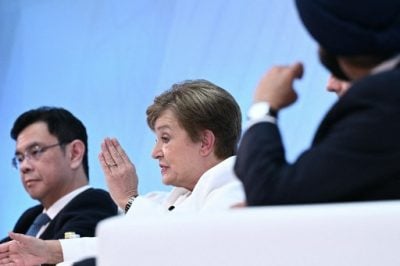Last November Kenyan President Uhuru Kenyatta commissioned the construction of the Mombasa-Nairobi standard-gauge railway (SGR). This is believed to be East Africa’s single largest investment project in decades. This is the first phase of a grand Kshs 1.3 trillion ($15bn) railway line project that will ultimately branch into South Sudan and Rwanda from Kampala. Like many other infrastructure projects in Kenya and the larger East African region over the last five years, the railway tender was awarded to a Chinese firm, thanks in large measure to Chinese financing. For Kenya, it is the largest infrastructure development in 50 years.
At the time of the launch, there was a great deal of fanfare and high expectations of the benefits of the railway but four months later, controversy is stalking the railway project.
According to the Kenya government, China’s Exim Bank offered a total of $3.63bn for phase one of the 609km Mombasa-Nairobi railway. Of this amount $1.6bn was a commercial loan and $1.63bn was a concessional loan. The Chinese firm, China Railway and Bridges Corporation (CRBC) have been awarded the contract for the first portion of the SGR. The feasibility study and design of Phase 1 of the project has already been completed by CRBC and the Kenya Railways Corporation.
The railway is expected to reduce the cost of doing business in the larger East African Community (EAC) bloc region and elevate the economic profile of the region. However, critics of the project have claimed that the project has been overpriced to benefit a few corrupt government officials. To prove their case, they have compared the Kenyan-Uganda railway to the Djibouti- Addis Ababa railway. The 609km Mombasa-Nairobi section of the Kenya-Uganda railway will cost $5.1bn while the longer 756-km Djibouti-Addis Ababa rail line is estimated at $4.5bn.
The allegations were followed by insinuations that the tendering, which was single sourced, is ripping off the Kenyan taxpayers. There have been calls for an audit of how the project was undertaken and the factors that led to CRBC getting the multibillion-dollar contract.
Over the last three months, the Kenyatta Jubilee administration has found itself defending the project, claiming that it is above board. Transport and Infrastructure Secretary Michael Kamau explains why the cost of the Mombasa-Nairobi SGR differs from that of the Djibouti-Addis Ababa railway. He says the cost of the Kenyan line is higher compared to other similar projects because it passes through the world-famous wildlife sanctuary, the Tsavo National Park.
The Kenyan environment and wildlife protection laws are quite strict on protected areas, giving wild animals right of way. Because of this, the railway design had to be altered to include a 100km elevated viaduct – the entire stretch that the railway will cross the national park. This is to allow free movement and migration of wild animals.
In addition to the viaduct, the design is meant to allow for double stacking of containers and future electrification. There will also be 33 new passenger stations, a parallel all-weather road, rolling stock, workshops and the upgrading of the Railway Training Institute. All these components of the Mombasa-Nairobi line, according to Kamau, are absent from the Djibouti-Addis Ababa railway, hence explaining the cost difference.
At present the Public Investments Committee, one of the watchdog bodies of the Kenyan parliament, is conducting an inquiry into the deal. Edward Ouko, who is Kenya’s auditor general, has also confirmed that his office is carrying out a forensic audit on the same.
The divergent interpretations of the contract and the costs of the railway have threatened to soil the reputation of the Jubilee administration, prompting the intervention of President Kenyatta in the matter. While answering the railway critics and distancing his government from corruption allegations, President Kenyatta declared that the project would proceed as it was above board.
Kenyatta turned the tables and accused the critics of the project as bad losers spreading negative perceptions after losing out on the railway tender bid. “There comes an hour when the noise must stop and the work must begin. We are at that hour,” President Kenyatta said at a press conference in Nairobi’s State House. “If you lose a bid, move on, don’t stop our transformative agenda.”
The din over the railway has since stopped as President Kenyatta’s statement was interpreted here as an executive order and construction work on the railway is under way.
Considering the background leading to the awarding of the contract to the Chinese, it is easier to understand why Kenyatta was calling to an end to the debate.
Regional pressures
Kenyatta’s pledge that the Kenyan railway construction will not be stopped is a fulfilment of a regional obligation. The genesis of the standard gauge railway goes all the way to the broad transport plans set out at the Tripartite Inter Governmental Authority of Development (IGAD) Infrastructure Investment Conference held in Nairobi in 2011. This road-map set by IGAD was firmed up at the 14th East African Community (EAC) Heads of State Summit in Nairobi in December 2012. It came up with a 10-year master plan to modernise the entire regional railway network to standard gauge.
The Mombasa-Nairobi-Malaba-Kampala; Voi-Taveta; Lamu-Isiolo-Moyale-Addis Ababa; Isiolo-Nadapal-Juba and Nairobi-Isiolo railways lines were all prioritised for modernisation.
To spearhead this decade-long project, a special ‘Railways Unit’ has been established at the EAC Secretariat with financial support coming from the African Development Bank (AfDB) and the Indian Trust Fund. Regional trade demands for both cargo and passengers rail transport are at the very heart of this push to modernise the regional railway network.
The issue was later followed up at a Tripartite Infrastructure Summit which met in June last year in Entebbe, Uganda. President Kenyatta joined Rwanda’s Paul Kagame and Yoweri Museveni of Uganda to fast track regional integration through infrastructure, trade, economic and political participation. At this summit, Uganda agreed to spearhead political federation and railway infrastructure with Rwanda taking the lead in the single tourist visa, single customs territory and EAC e-Identity card measures. Kenya was tasked with electricity generation and oil pipeline operations.
For decades now, a modern, functioning railway has been the missing link of Kenya’s main transport artery, the Northern Corridor which links Nairobi to the seaport city of Mombasa. Kenya’s neighbours Uganda, Rwanda, Burundi, Eastern Democratic Republic of Congo (DRC) and South Sudan depend heavily on the Northern corridor for their goods.
It is not yet clear what the new SGR will affect the century old Kenya-Uganda railway, which was concessioned to the Rift Valley Railway (RVR) in November 2006. The RVR was expected to ease the current pressure piled on the Mombasa-Nairobi-Malaba A1 road and holds a 25-year concession on the railway.
However RVR, which is a consortium led by Egyptian private equity firm Citadel (which owns 51%), Kenyan investment firm Transcentury and Ugandan Bomi Holdings owning 34% and 15% respectively, has been unable to radically attract both cargo and passenger traffic to the vintage railway line.
Plagued by the slow movement of cargo and constant wagon derailments, this railway has become uncompetitive. The failure of the railway system has been a boon to long distance truck haulage companies who control 96% of all cargo freight to and from Mombasa port.
However, the overdependence on the road network has been damaging to the regional roads. This was the principal motive behind the 2012 EAC heads of state summit decision to switch the entire regional railway network from the existing metre gauge to a standard gauge line.
The SGR is expected to reduce transit time from Mombasa to Kisumu from the current 30 hours to eight hours and also reduce freight charges from the current $0.20 per tonne per kilometre to $0.083.
Want to continue reading? Subscribe today.
You've read all your free articles for this month! Subscribe now to enjoy full access to our content.
Digital Monthly
£8.00 / month
Receive full unlimited access to our articles, opinions, podcasts and more.
Digital Yearly
£70.00 / year
Our best value offer - save £26 and gain access to all of our digital content for an entire year!
 Sign in with Google
Sign in with Google 


